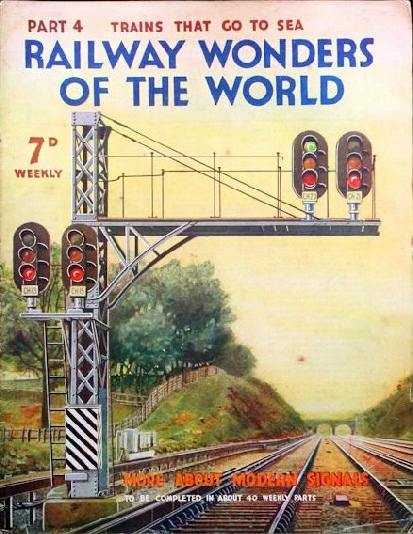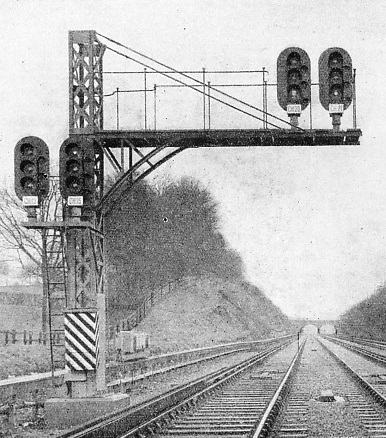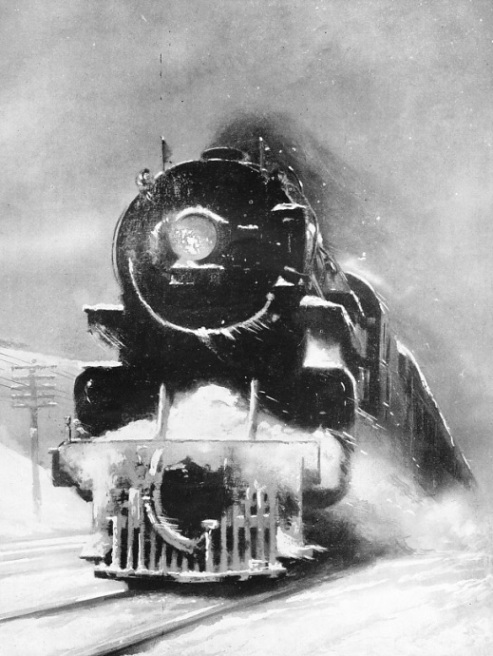
© Railway Wonders of the World 2024 | Contents | Site Map | Contact Us | Cookie Policy


Part 4
Part 4 of Railway Wonders of the World was published on Friday 22nd February 1935.
This issue contained a black and white
art plate depicting The Fury of the Blizzard, which is reproduced below.
The Cover
The cover featured a Southern Railway colour light signal gantry. It was later adapted as part of the cover design for part 50.
The gantry may be identified as one near Copyhold Junction, since a black and white photograph of the same location appears on page 32 of part 1, as shown right, below the cover. (The original photograph has been cropped to resemble the front cover).

Contents of Part 4
Editorial
Railways Under London (Part 2)
The Fury of the Blizzard (art plate)
THE FURY OF THE BLIZZARD makes no impression on this mammoth locomotive - over the snow-swept track the giant mass of steel answers the roar of the gale with the thunder of its pounding wheels. In safety and comfort in the sheltered cars, the passengers move swiftly on their way - time, space and the elements have been mastered by the might of the machine.
Out to Sea by Train
The story of the Key West Railway extension of the Florida East Coast Railway across the “keys” to Key West. The line runs across islands, bridges, embankments and viaducts. The story of a railway that was built with the aid of a flotilla of strange ships makes fascinating reading. The article is subtitled “How a railway was carried over a hundred miles across the waters of the Mexican Gulf”.
This is the first article in the series The World’s Strangest Railways.
Aerial Railways
This chapter describes a novel form of transport for conveying goods and passengers in mountainous districts, ie cable cars. This raises an interesting question of what defines a railway? Cable cars do not use rails since they are built where railways are impractical, nevertheless this article is included in a series on “Railway Wonders”. Stranger still, the motif used on the front cover of the bound volumes for this series also features a cable car rather than a railway locomotive!
Ruling the Traffic Routes
Details of the wonderful electrical devices that operate points and signals far down the railway track. In the signal cabins, with their array of push buttons and switches, the signalmen watch the progress of the trains as the coloured lights change and flash on the panels before them. It includes examples taken from the LMS, the LNER and the GWR. This is the second article in the series The Magic of Modern Signals
The “Trans-Canada Limited” (Part 1)
A description of this famous train operating from Montreal to Vancouver, across prairie and mountain ranges.
This is the second article in the series Famous Trains. The article is concluded in part 5.

